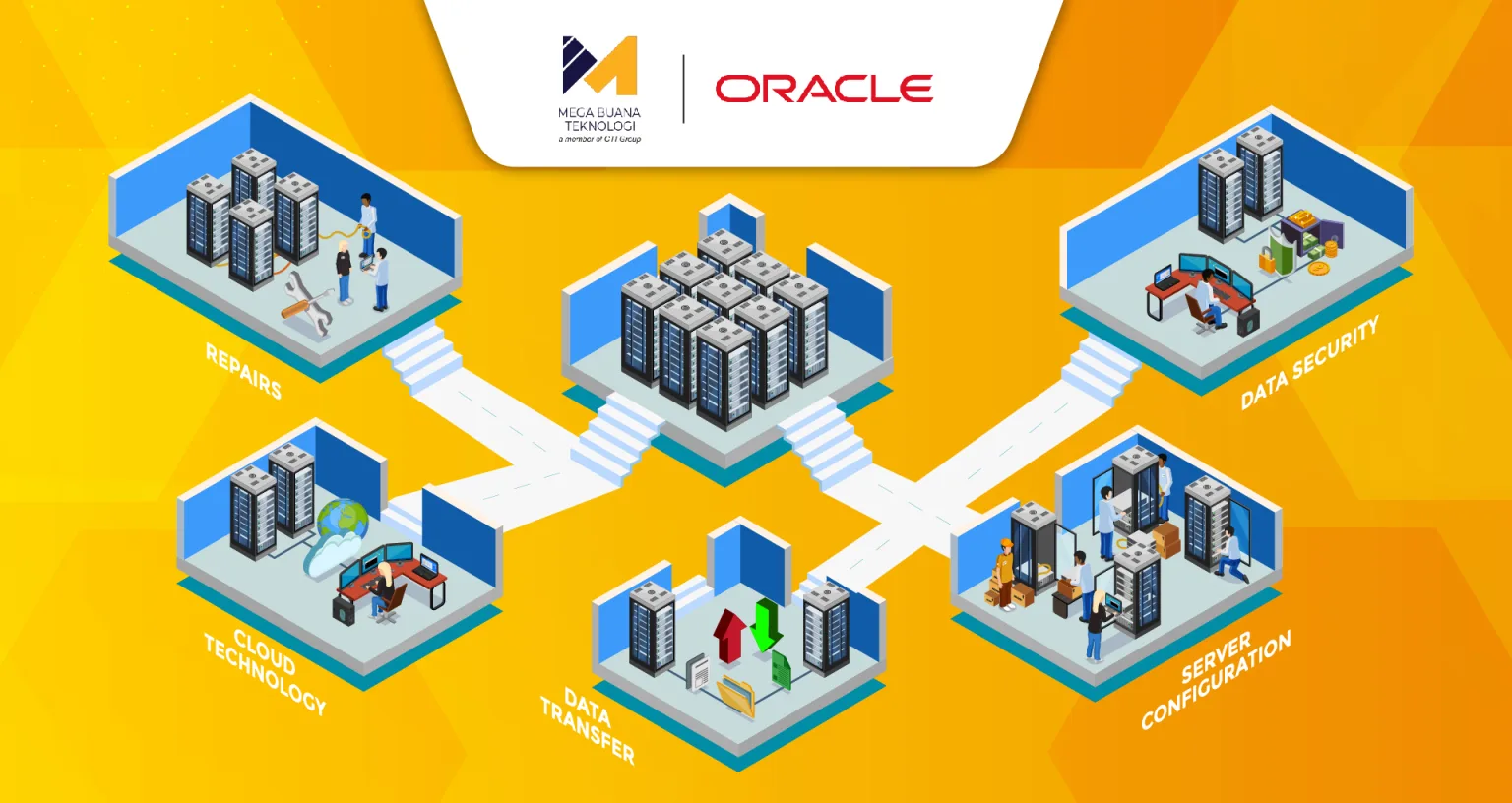In today’s increasingly competitive digital landscape, data has become one of the most valuable assets for businesses. Yet many organizations still struggle to manage the surge of information coming from various sources—ranging from transactions and customer activity to ERP systems, social media, and more. As a result, data becomes fragmented and underutilized, hindering timely and strategic decision-making.
This is where the concept of data warehousing comes in. The technology is designed to unify, store, and manage enterprise data within a centralized system—making it readily available for analytics, reporting, and long-term planning. According to reports from IDC and Oracle, companies that adopt modern data warehouse solutions have reduced operational costs by up to 63% and achieved an impressive 417% ROI within five years.
So, what exactly is a data warehouse? How does it work to consolidate and streamline data from across the enterprise? Discover the answers in the article below.
What Is a Data Warehouse?
A data warehouse is a specialized data management system designed to store, integrate, and analyze large volumes of structured data. Unlike operational databases focused on daily transactions, data warehouses are historical and analytical by nature. They consolidate data from multiple sources—such as business applications, activity logs, and external files—into a centralized “single source of truth” accessible across departments and teams.
The core purpose of a data warehouse is to support analytics and strategic decision-making with speed and accuracy. From reporting and data visualization to forecasting and machine learning, data warehouses enable businesses to extract insights from historical trends, uncover patterns, and make informed decisions. More than just a storage solution, a data warehouse is the foundation for deriving real business value from data.
Key Characteristics of a Data Warehouse
One reason data warehousing remains vital in modern data strategies is its architecture—designed specifically for analysis rather than operational processing. Its structure and workflow are tailored to long-term storage, cross-system integration, and near-instantaneous analytics. So, what makes a data warehouse distinct? Here are the defining characteristics.
Subject-Oriented
A data warehouse organizes information around specific business areas such as sales, marketing, or finance. This subject focus enables deeper and more relevant analysis for each function.
Integrated
Data from various sources—often in different formats—is transformed into a consistent structure within the warehouse. This ensures accuracy, eliminates redundancy, and makes data reliable for analytics.
Non-Volatile
Once data enters the warehouse, it’s not modified or deleted. This stability preserves historical accuracy and supports long-term trend analysis.
Time-Variant
Every data point is time-stamped, enabling organizations to track changes, analyze performance over time, and generate predictive insights based on historical trends.
Types of Data Warehouses
Different organizations have different goals when managing data—some need a bird’s-eye view of company-wide operations, while others focus on specific departmental insights. That’s why data warehouses come in different types, each tailored to scale, flexibility, and access needs. Here’s a quick breakdown.
Enterprise Data Warehouse (EDW)
An EDW is a comprehensive, integrated data system covering the entire organization. It aggregates data from various operational systems and enables cross-departmental analysis, making it ideal for large enterprises needing a centralized, unified data source.
Operational Data Store (ODS)
ODS is designed for real-time or near-real-time data needs. It houses frequently updated data that supports daily operational reporting and monitoring—ideal for departments requiring current data snapshots.
Data Mart
A data mart is a smaller, more focused version of a data warehouse, dedicated to a specific business unit like marketing or finance. It’s quicker to implement and more efficient for teams with targeted analytics needs.
Traditional vs. Cloud-Based Data Warehouses
As businesses demand faster, more flexible access to insights, many are transitioning from traditional data warehouses to cloud-based models. While both have their strengths, they differ significantly in management, scalability, and cost-efficiency.
| Aspects | Traditional Data Warehouse | Cloud-Based Data Warehouse |
| Deployment | On-premises hardware and infrastructure | Hosted on cloud infrastructure, managed by cloud providers |
| Scalability | Manual, requires hardware upgrades | Auto-scaling based on usage needs |
| Cost Structure | High upfront investment and maintenance costs | Pay-as-you-go, optimized for operational expenses
|
| Maintenance | Requires in-house IT team for patching, updates, and monitoring | Fully automated maintenance and updates
|
| Performance Tuning | Manual indexing and tuning | Automated query optimization and workload balancing
|
| Implementation Speed | Takes weeks to months to set up | Can be deployed and scaled within minutes
|
| Flexibility | Less flexible, hard to integrate with modern tools | Easy integration with modern analytics, ML tools, and third-party platforms
|
| Security | Controlled on-prem, may lack modern cloud-based protections | Built-in advanced security features, compliance support, and multi-layer encryption
|
| Accessibility | Limited to on-site access | Accessible from anywhere with secure credentials |
| Disaster Recovery | Requires manual backup setup | Built-in backup, redundancy, and disaster recovery capabilities |
How Cloud Data Warehousing Works
Behind the seamless experience of cloud-based data warehousing lies a well-orchestrated system. Cloud data warehouses integrate data from multiple sources into a centralized, cloud-hosted platform, where extract, load, and transform (ELT) processes run automatically.
This data is then stored in a distributed, scalable architecture optimized for speed and reliability. With built-in automation, machine learning, and performance monitoring, cloud providers handle everything from query tuning to storage management—eliminating the need for manual oversight or complex infrastructure.
Business Benefits of Data Warehousing
In today’s hyper-competitive environment, speed in making data-driven decisions is crucial. However, disorganized or slow-access data often blocks strategic progress. Data warehousing simplifies data management and opens the door to faster, smarter, and more measurable decision-making.
Operational Efficiency
It cuts the time and resources needed for manual reporting or ad-hoc data prep. Automation and cross-system integration let IT and analysts focus on strategic insights, not technical bottlenecks.
Improved Data Quality and Consistency
By processing all incoming data into a standardized structure, data warehouses improve report accuracy and reduce risks of duplication or inconsistency.
Historical and Predictive Analysis
With long-term data retention and time-variant structuring, businesses can analyze past trends and forecast future outcomes—essential for strategic planning and risk management.
High ROI and Cost Efficiency
Modern data warehouses have been shown to reduce operational costs by up to 63% and deliver an ROI of 417% over five years—proving their financial impact is as strong as their technical benefits.
Tips for Choosing the Right Cloud Data Warehouse
Selecting the right cloud-based data warehousing solution involves more than just pricing or storage space. A truly strategic choice addresses integration needs, flexibility, user experience, security, and advanced analytics. Ideal solutions support rapid data growth, diverse workloads (from OLAP to AI-driven analysis), and are backed by trusted cloud providers. Other key factors include auto-scaling, query speed, flexible billing models, and collaborative tools for cross-functional teams.
Oracle Autonomous Data Warehouse: A Modern Approach to Data Strategy
Oracle Autonomous Data Warehouse is a next-gen solution purpose-built to simplify large-scale analytics data management. Fully automated from provisioning to tuning, patching, and scaling, it empowers businesses to extract maximum value from their data—without the usual operational complexities. Powered by Exadata and elastic cloud infrastructure, Oracle ensures speed, efficiency, and security trusted by global enterprises.
Key Benefits of Oracle Autonomous Data Warehouse
The solution enables up to 50% reduction in financial closing cycles, a 60% decrease in data administration overhead, and up to 65% less workload for reporting tasks. With query performance up to 180x faster than traditional data systems, it significantly enhances real-time analytics, streamlines operational workflows, and accelerates strategic decision-making across the enterprise.
Standout Features
Built on Exadata and fully cloud-native, Oracle Autonomous Data Warehouse offers auto-scaling for compute and storage, self-tuning queries, and zero-downtime patching. It supports open SQL, Apache Spark and Python integration, plus data lakehouse and ML capabilities—delivering an end-to-end autonomous experience with top-tier performance.
Build Your Modern Data Warehouse with MBT
As part of the CTI Group, Mega Buana Teknologi (MBT) is here to help organizations build secure, scalable, and future-ready data warehousing solutions. Through proven technologies like Oracle Autonomous Data Warehouse, we deliver end-to-end services—from consultation and planning to seamless deployment across on-prem, cloud, or hybrid environments.
Backed by certified experts and deep enterprise IT experience, MBT is your trusted partner in transforming data into meaningful business outcomes.
Reach out to us today and start your data transformation journey with the right solution—built for scale, speed, and strategic impact!
Author: Danurdhara Suluh Prasasta
CTI Group Content Writer





